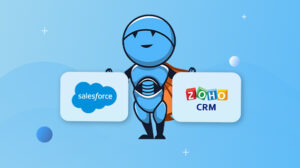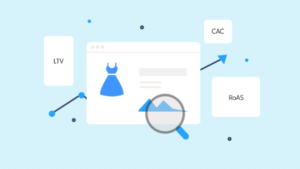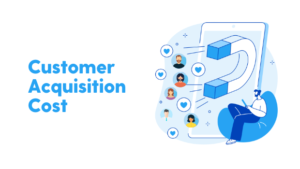If you are reading this, you are probably looking for a way to transfer data from Firebase to Snowflake quickly & efficiently. In this article, we will talk about why using Firebase is essential and how you can get data from all your apps and tools together in one place without having to write any code.
The choice for eCommerce businesses when it comes to marketing and selling their merchandise is growing every day. eCommerce vendors have to decide on what channels they want to sell on, which channels they want to spend their advertising dollars on, whether the channels include:
- Branded websites & Mobile Apps
- In some cases branded eCommerce sites per country
- Marketplaces
- In many instances, marketplaces per country
- Retail stores
- to create an omnichannel presence and to engage buyers where the shop
With close to 60 per cent of the world’s internet traffic on mobile, most of the top companies generate a large chunk of their revenues from their Mobile Apps and mobile websites. Mobile Apps give companies the ability to maximize their revenue by promoting various products and services, offers, deals to their users by sending them to push notifications. Development teams across companies prefer using Google’s Firebase to develop advanced Mobile Apps quickly and easily. Apps Made using Firebase also give companies the ability to track their users to a greater extent and work towards proving a more personalized user engagement, which helps increase CLTV.
Complexity increases with the addition of every sales channel. For instance, if we consider marketing channels available to support online business, you will find a choice of:
- Social media ads – Some platforms include Facebook Ads, Instagram, LinkedIn, Twitter, and others
- Digital ads and remarketing – Criteo, Taboola, Outbrain, and others
- PPC – Google ads, Bing ads, and others
- Email – Mailchimp, Klaviyo, Hubspot, and others
- Podcasts
- Affiliate – Refersion, CJ Affiliates
- Influencer marketing
- Offline marketing and more
In a competitive digital landscape that we live in, it has become imperative that eCommerce businesses of all sizes that aspire to grow and stay profitable have to look into their data deeply and leverage this for growth.
With the increase in competition, eCommerce Companies should strive to be more data-driven for various reasons. Some of these reasons include:
- Understanding the balance between demand and supply,
- Understanding customer lifetime value (LTV)
- Segmenting customer base for effective marketing
- Finding opportunities to reduce wasteful spend
- Optimizing digital assets to maximize revenue for the same marketing spend,
- Improving ROIs on Ad campaigns and
- Offering an engaging and seamless experience for customers in every channel that the customer engages with the brand.
Businesses these days need to be efficient in terms of their data analysis. They are struggling to make sense of the data generated from various applications and tools used to manage different processes efficiently.
Due to the reasons highlighted above, any eCommerce business typically operates at least 10-15 different software/platforms to deliver on their customer expectations. As a result, data silos are created, which makes it more difficult to consolidate data and use the data for reporting, operations, analysis, and taking informed forward-looking decisions.
Firebase with Google Analytics generates a substantial amount of data like Traffic, Audience Demography, User Behaviour, Clicks, Bounce Rates, Time on Site, Traffic Source, Browsing Device, Crash Analytics, and much more. Additionally, eCommerce companies that sell globally often end up having separate views or dashboards for each country-specific mobile application. It is quite reasonable to have marketers, product managers, and eCommerce managers needing to review data from multiple GA assets. Imagine a brand selling in three countries; they would have different marketing channels with varying demographics of the audience for each country – driving traffic to a separate website & mobile app.
For example:
https://myshop.us for the USA
https://myshop.de for Germany
https://myshop.de for France
It would be tough to get the complete picture of the business in one place if you do not consolidate data generated in tools used by multiple departments. However, it takes a considerable amount of time, skills, and resources to extract all data manually. At times, it is almost impossible, leaving analysts with little time or scope to focus on analysis.
These separate silos make a comprehensive analysis of the business data, challenging. Data Savvy eCommerce businesses try to reduce the effort of reporting and analysis by integrating data from all these channels into a cloud data warehouse like Snowflake. By taking this step, the process of reporting and analysis becomes easy, inexpensive, and consequently done more frequently.
In this post, we will be looking at methods to replicate data from Firebase to Snowflake.
Before we start exploring the process involved in data transfer, let us spend some time looking at these individual platforms.
Firebase Overview
Building an app is like writing & sending a letter: we put much effort into designing the envelope, but it is always the writing inside that matters. Writing backend code, managing hardware, and dealing with hosting is not as fun as writing letters. And many would appreciate it if someone takes care of it for them.
Backend-as-a-Service (BaaS) thus has increasingly become a popular cloud-computing solution for businesses and tech-enthusiasts. These services don’t have costs to build their own or maintain an existing backend infrastructure. As in many other tech-spheres, one of the leading positions on the BaaS market is held by Google’s product: Firebase.
Firebase allows users to eliminate the need for managing backend databases and obtaining corresponding hardware. Instead, you can plug them into your app via dedicated APIs for each separate service. The list of platforms Firebase integrates which includes Android, iOS, Web, and Unity. Firebase is loved by its users because :
- Firebase provides you with functionality like analytics, databases, messaging, and crash reporting so you can move quickly and focus on your users.
- Firebase is built on Google infrastructure and scales automatically, for even the largest apps.
- Firebase individual products work great but share data and insights, so they work even better together.
- Deploy functionality to your app quickly using pre-packaged solutions. Firebase Extensions are configurable and work with Firebase and other Google Cloud Platform products.
- Firebase allows tackling demanding challenges of developers, marketers, or product managers. It’s tools work together so that mobile teams can improve app performance while gaining valuable user insights.
- Before releasing a new feature, you can test it on a subset of your user base using Firebase to see how it works and how they respond.
Snowflake Overview
Snowflake is a cloud-based data warehouse created by three data warehousing experts at Oracle Corporation in 2012. Snowflake Computing, the vendor behind the Snowflake Cloud Data Warehouse product, raised over $400 million over the past eight years and acquired thousands of customers. One might wonder if another data warehouse vendor is needed in an already crowded field of traditional data warehousing technologies like Oracle, Teradata, SQL Server, and cloud data warehouses like Amazon Redshift and Google BigQuery. Well, the answer is the disruption caused by cloud technologies and cloud opportunities for new technology companies. Public clouds enabled startups to shed past baggage, learn from the past, challenge the status quo, and take a fresh look at cloud opportunities to create a new data warehouse product. You can read this article to understand the core technology components that make up this modern, cloud-built data warehouse for consumers of cloud technologies.
You can register for a $400 free trial of Snowflake within minutes. This credit is sufficient to store a terabyte of data and run a small data warehouse environment for a few days.
For more information, visit Firebase Connector.
Why Do Businesses Need to Replicate Firebase to Snowflake?
Let’s take a simple example to illustrate why data consolidation from Firebase to Snowflake can be helpful for an eCommerce business.
A global company sells its products in different countries through various channels like online marketplaces like Alibaba, Amazon or their website using platforms like Shopify, Unicommerce and on their Mobile Application. They run different marketing campaigns across different channels in each country.
Now let us say that the company wants to calculate its overall business profits. We all know that :
Profits/Losses = Sales – Expenses
The sales data will come from Shopify as well as from Amazon and Alibaba. But again the data from the payment gateways are required to assess the mode of payment, user bounce rate and reason of not completing a purchase. Data from Firebase and Google play console is necessary to understand the trends and reasons for app installs and the user flow across the mobile application from different marketing sources. In most cases, there are separate data silos for each tool for each country. Thus, it becomes a nearly impossible task to pull all of these data from multiple platforms for each country separately, and then analyze all of this data together with the expense data and calculate profits. It involves a lot of working hours which costs money, and there is usually a time lag involved, which reduces the accuracy of the analysis and its effectiveness as the data analysis does not happen in real-time. Consolidate all of the data in a data warehouse like Snowflake to simplify the process.
If this company then wants to optimize its profits, they need to increase sales and decrease expenses. Hence they need to associate the traffic flowing from their marketing campaigns to the purchases taking place to understand which marketing activity is generating better ROIs and which needs improvement. Also, critical data like which marketing channel is providing users with higher CLTV, and what kind of audience targeting is leading to higher app installs and in-app purchases need analysis. Thus, Firebase comes into play. It captures the flow of traffic from different channels into a mobile application. But Firebase fails to capture the sales data accurately and the data from marketing tools like target audience, Ad impressions. To understand the sales funnel clearly, and give accurate attributions to the marketing activities, it becomes vital to check the data from the various data sources in use manually and then tally that data to the data coming from Firebase to gain meaningful insights. Hence, this becomes a difficult task when done manually on a scale.
Using Only Firebase, it is not possible to :
- Calculate Customer LTV
- Get accurate e-Commerce or sales data
- Give accurate attributions to marketing channels
- Analyze customer feedback
- View multiple app data silos together
- Analyze shipping, logistics, inventory and other data
- View and analyze data generated from third-party tools and software
For these reasons, top companies consolidate all of their data from Firebase and other apps and tools into a data warehouse like Snowflake to analyze the data and generate reports at a rapid pace.
Replicate data from Firebase to Snowflake
There are two board ways to pull data from any source to any destination. The decision is always a build vs buy decision. Let us look at both these options to see which option provides the business with a scalable, reliable, and cost-effective solution for reporting and analysis of Firebase data. You can also retrieve the data from Snowflake any time you want.
Use a cloud data pipeline
Building support for APIs is not only tedious but it is also extremely time-consuming, difficult, and expensive. Engaging analysts or developers in writing support for these APIs takes away their time from more revenue-generating endeavors. Leveraging an eCommerce data pipeline like Daton significantly simplifies and accelerates the time it takes to build automated reporting. Daton supports automated extraction and loading of Firebase data into cloud data warehouses like Google BigQuery, Snowflake, Amazon Redshift, and Oracle Autonomous DB.
Configuring data replication on Daton on only takes a minute and a few clicks. Analysts do not have to write any code or manage any infrastructure but yet can still get access to their Firebase data in a few hours. Any new data is generated is automatically replicated to the data warehouse without any manual intervention.
Daton supports replication from Firebase to a cloud data warehouse of your choice, including Snowflake. Daton’s simple and easy to use interface allows analysts and developers to use UI elements to configure data replication from Firebase data into Snowflake. Daton takes care of
- authentication
- rate limits,
- Sampling,
- historical data load,
- incremental data load,
- table creation,
- table deletion,
- table reloads,
- refreshing access tokens,
- Notifications
and many more important functions that are required to enable analysts to focus on analysis rather than worry about the data that is delivered for analysis.
Daton – The Data Replication Superhero
Daton is a fully-managed, cloud data pipeline that seamlessly extracts relevant data from many data sources for consolidation into a data warehouse of your choice for more effective analysis. The best part analysts and developers can put Daton into action without the need to write any code.
Here are more reasons to explore Daton:
- Support for 100+ data sources – In addition to Firebase, Daton can extract data from a varied range of sources such as Sales and Marketing applications, Databases, Analytics platforms, Payment platforms, and much more. Daton will ensure that you have a way to bring any data to Snowflake and generate relevant insights.
- Robust scheduling options allow users to schedule jobs based on their requirements using simple configuration steps.
- Support for all major cloud data warehouses including Google BigQuery, Snowflake, Amazon Redshift, Oracle Autonomous Data Warehouse, PostgreSQL, and more.
- Low Effort & Zero Maintenance – Daton automatically takes care of all the data replication processes and infrastructure once you sign up for a Daton account and configure the data sources. There is no infrastructure to manage or no code to write.
- Flexible loading options allows to you optimize data loading behavior to maximize storage utilization and also easy querying.
- Enterprise-grade encryption gives your peace of mind
- Data consistency guarantee and an incredibly friendly customer support team ensure you can leave the data engineering to Daton and focus instead of analysis and insights!
- Enterprise-grade data pipeline at an unbeatable price to help every business become data-driven. Get started with a single integration today for just $10 and scale up as your demands increase.
For all sources, check our data connectors page.
We Saras Analytics can help with our eCommerce-focused Data pipeline (Daton) and custom ML and AI solutions to ensure you always have the correct data at the right time. Request a demo and envision how reporting is supercharged with a 360° view.
Other Articles by Saras Analytics,













